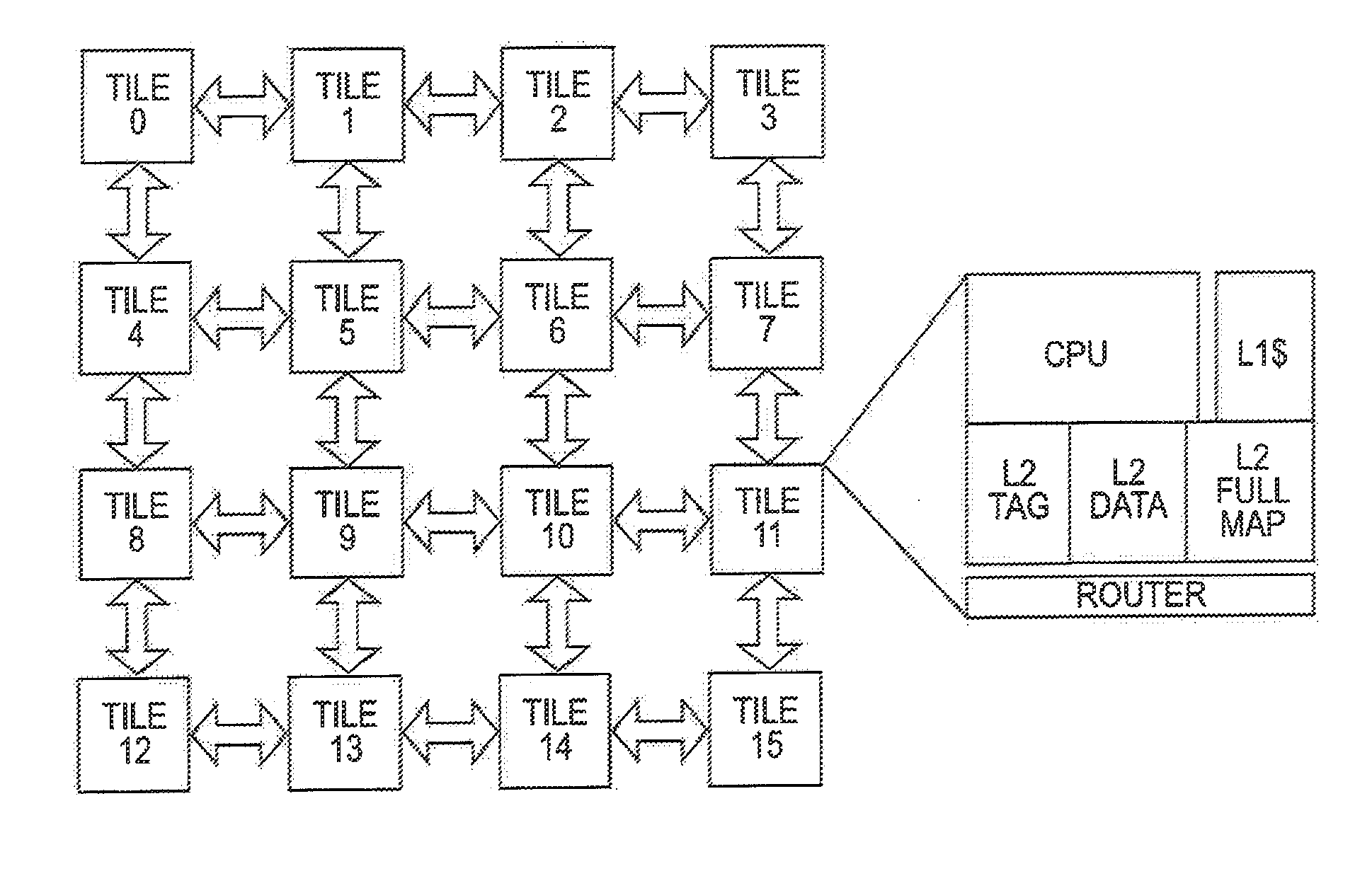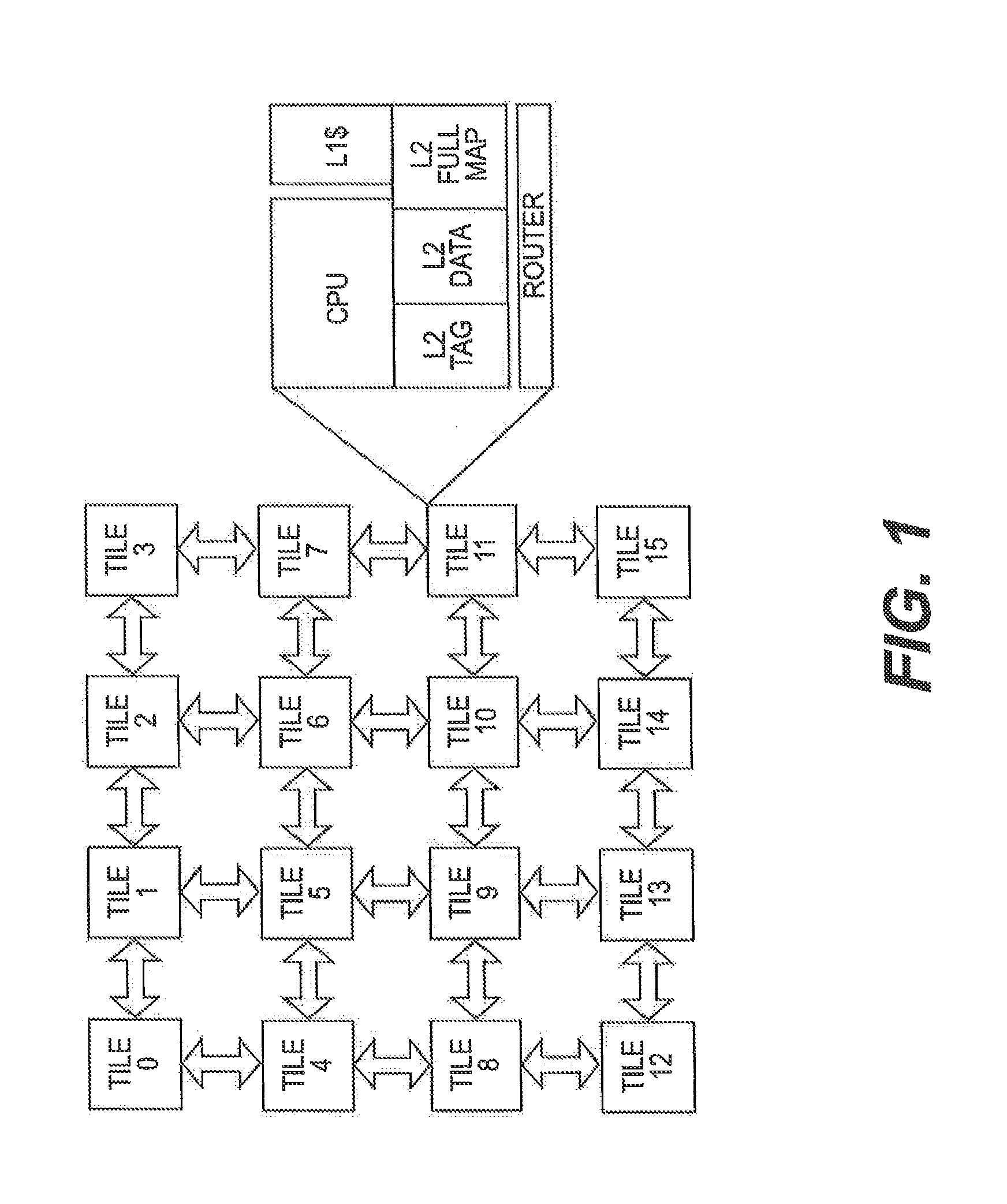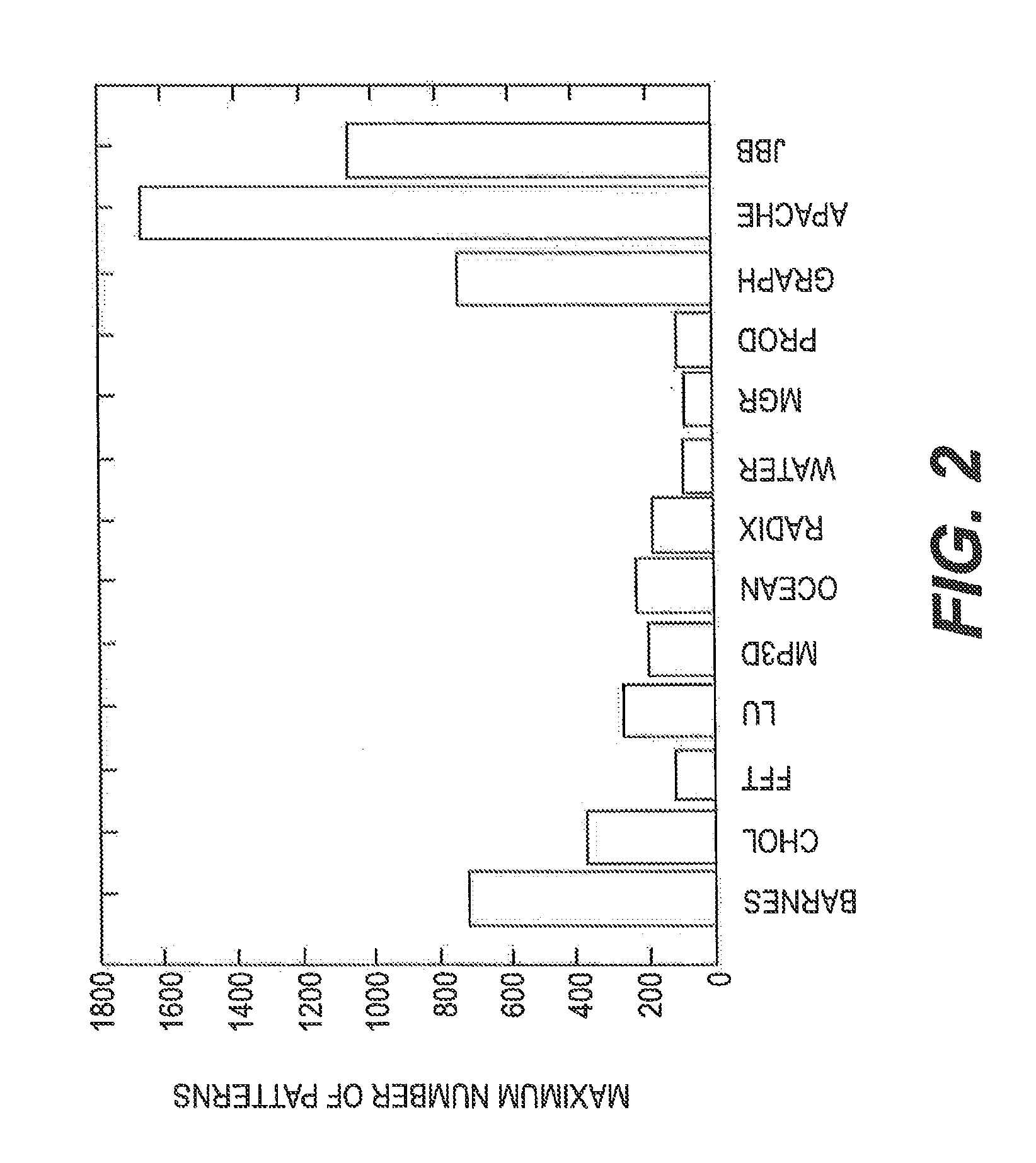Sharing Pattern-Based Directory Coherence for Multicore Scalability ("SPACE")
- Summary
- Abstract
- Description
- Claims
- Application Information
AI Technical Summary
Benefits of technology
Problems solved by technology
Method used
Image
Examples
Embodiment Construction
Sharing Patterns
[0028]The sharing pattern of a cache line can be represented as a P-bit vector (where P is the number of processors), with each bit specifying if the corresponding processor has a copy of the block. The maximum number of sharing patterns possible is 2P. A conventional prior art directory will assume that each cache line has a unique pattern and that this pattern could be any one of 2P. Hence, each cache line has an associated P-bit sharing pattern. Many cache lines in the application are accessed by the same set of processors, which essentially leads to the same sharing bit-vector pattern. Because of application semantics and the regular nature of inter-thread sharing, it is also likely for a system to repeatedly encounter the same set of patterns.
[0029]FIG. 2 shows the maximum number of patterns encountered in an application during any snapshot of its execution (examined every 100,000 instructions) for a 16 processor system. Although the maximum possible number of p...
PUM
 Login to View More
Login to View More Abstract
Description
Claims
Application Information
 Login to View More
Login to View More - R&D
- Intellectual Property
- Life Sciences
- Materials
- Tech Scout
- Unparalleled Data Quality
- Higher Quality Content
- 60% Fewer Hallucinations
Browse by: Latest US Patents, China's latest patents, Technical Efficacy Thesaurus, Application Domain, Technology Topic, Popular Technical Reports.
© 2025 PatSnap. All rights reserved.Legal|Privacy policy|Modern Slavery Act Transparency Statement|Sitemap|About US| Contact US: help@patsnap.com



